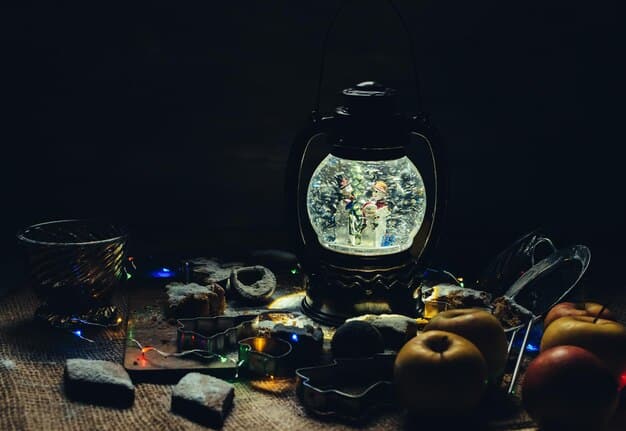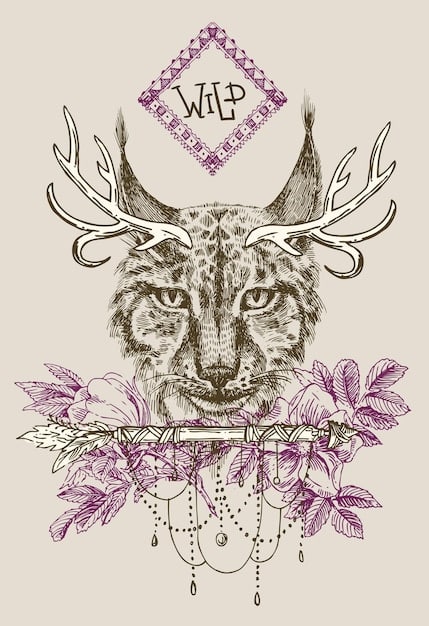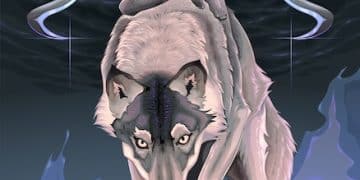The Witcher’s Relics: Lore, Power, and Impact Explored

The Importance of Relics: Uncovering the Lore Behind Powerful Artifacts and Their Impact on the Witcher World reveals how these objects shape narratives, bestow powers, and influence destinies within the game.
Delve into the rich tapestry of the Witcher universe and discover the importance of relics: uncovering the lore behind powerful artifacts and their impact on the Witcher World, from ancient swords to potent elixirs.
Unveiling the History of Relics in the Witcher Universe
The world of the Witcher is steeped in history, and its relics are tangible links to bygone eras. These objects, imbued with power and significance, serve as more than mere collectibles; they are keys to understanding the struggles, triumphs, and magical underpinnings of this fantastical realm.
Understanding the history behind each relic provides gamers a deeper appreciation for the game’s lore and the power each item grants.
The Dawn of Witcher Relics
Relics in the Witcher universe can be traced back to the Conjunction of the Spheres, a cataclysmic event that merged different dimensions, introducing magic and monsters to the world. Early relics were often created by mages and sorceresses, imbued with magical properties to combat the new threats.
The Significance of Craftsmanship
Many powerful relics were not merely enchanted objects, but masterfully crafted items. Swords forged by legendary smiths, armor imbued with protective enchantments, and alchemical concoctions refined over generations held immense value. The craftsmanship behind these items often increased their effectiveness and cultural significance.
- Ancient Swords: Blades like Aerondight and Gwyhyr are not just weapons but symbols of honor and skill.
- Magical Amulets: Amulets such as the Cat School Medallion provide wearers with unique abilities and protections.
- Alchemical Formulas: Recipes for potent potions and oils, passed down through generations of Witchers, can turn the tide of battle.
Relics are more than just items; they tell stories of power, magic, and craftmanship.

Legendary Swords: Aerondight and Beyond
Among the relics of the Witcher world, legendary swords hold a special place. These blades are not just weapons; they are characters in their own right, imbued with rich histories, unique properties, and destinies intertwined with those who wield them. Aerondight is arguably the most famed of the legendary swords.
Discovering these blades often entails a journey through treacherous landscapes and epic battles, solidifying their legendary status among the Witcher community.
Aerondight: The Living Sword
Aerondight stands as a true testament to the power relics can possess. Awarded to Geralt by the Lady of the Lake, this silver sword is not just a weapon but a living entity that evolves with its user. Its power grows with each worthy foe slain, making it a symbol of skill and honor.
Aerondight’s unique charging ability sets it apart from other blades, allowing Geralt to unleash devastating attacks upon his enemies. Each swing echoes with the whispers of battles past, adding to its mythical allure.
Other Notable Swords
While Aerondight may steal the spotlight, the Witcher universe boasts a plethora of other notable swords, each with its own story to tell. From the viper swords of the School of the Viper to the ornate blades carried by Nilfgaardian officers, swords reflect the values and culture of those who wield them.
- Gwyhyr: Another formidable blade, Gwyhyr, is known for its balance and sharpness, making it a favorite among skilled swordsmen.
- Viper Swords: Crafted by the School of the Viper, these blades are typically coated in poison, reflecting the school’s cunning tactics.
- Tesham Mutna Sword: This sword is a relic from the Tesham Mutna vampire, known for its ability to harm even the most powerful vampires.
Swords such as Aerondight and Gwyhyr are much more than mere weaponry; they’re symbols of lore and legacy.
Potions and Elixirs: Alchemy’s Potent Legacy
The world of the Witcher is not only about swords and steel but also the knowledge of alchemy. Potions and elixirs, meticulously brewed from rare ingredients, grant Witchers temporary enhancements, bolstering their strength, resilience, and senses. These concoctions are indispensable tools in their monster-hunting trade.
From the Cat potion that enhances night vision to the Thunderbolt potion that amplifies attack power, each elixir serves a specific purpose, adding depth and strategy to combat encounters.
The Art of Brewing
Brewing potions is an art form that requires extensive knowledge of herbs, monster parts, and alchemical processes. Witchers learn these skills through rigorous training, mastering the complexities of each recipe to create potent concoctions that push their bodies to the limit.
Creating and using potions is an essential element in the gameplay.
Iconic Potions and Their Effects
Among the vast repertoire of potions and elixirs available to Witchers, some have become iconic for their effectiveness and versatility. These concoctions are not merely stat boosters but transformative agents that allow Witchers to adapt to any situation.
- Swallow: This potion rapidly regenerates health, allowing Geralt to recover from grievous wounds during battle.
- Cat: This potion enhances night vision, allowing Geralt to navigate dark caves and forests with ease.
- Thunderbolt: This potion amplifies attack power, turning Geralt into a whirlwind of steel and fury.
These potions are a testament to the alchemical prowess of Witchers, granting them the edge they need to survive in a monster-infested world.
Amulets and Artifacts: Magical Protection and Power
Beyond swords and potions, Witchers rely on a variety of amulets and artifacts to augment their abilities and protect themselves from supernatural threats. These items, often imbued with magical properties, serve as conduits for arcane energy, granting wearers a range of benefits.
Amulets are not just accessories but essential tools for survival in a world teeming with dark magic and malevolent entities.
The Witcher’s Medallion
Perhaps the most iconic amulet in the Witcher universe is the Witcher’s medallion, a symbol of their profession and a tool for detecting magical presences. Each school of Witcher has its own unique medallion, representing their distinct values and training.
The medallion vibrates and pulses in the presence of magic, alerting Witchers to hidden dangers and supernatural phenomena.
Other Enchanted Artifacts
The Witcher world is brimming with other enchanted artifacts, each with its own unique properties and purpose. From protective talismans to offensive implements, these items offer Witchers a diverse array of options for enhancing their capabilities.
- Grapefruit: This artifact provides resistance to specific types of damage, such as elemental attacks or poison.
- Fiend Decoction: This decoction increases carrying capacity, allowing Geralt to carry more loot and equipment.
- Ancient Leshen Decoction: This decoction reflects damage back to attackers, turning their own strength against them.
Amulets and enchanted artifacts serve as indispensable tools for Witchers, offering protection, enabling special abilities, and granting them the edge they need to survive in a world filled with magic and monsters.

Relics and Their Impact on Questlines
Relics are not just static items in the Witcher universe; they play a pivotal role in shaping questlines and driving the narrative forward. Many quests revolve around finding, using, or protecting relics, adding depth and intrigue to the game’s story.
Relics often serve as catalysts for adventure, propelling Geralt into perilous situations and forcing him to make difficult choices.
The Power of Decision
Acquiring relics often involves making moral choices that have far-reaching consequences. Will Geralt prioritize his own gain, or will he put the needs of others first? The answers to these questions determine the outcome of quests and shape Geralt’s character.
These are the types of choices that often impact questlines involving relics.
Examples of Relic-Driven Quests
Numerous quests in the Witcher games are centered around relics, each offering unique challenges and rewards. These quests showcase the importance of relics in the world of the Witcher and their impact on the lives of its inhabitants.
- The Sword of Destiny: This quest revolves around Geralt’s search for the legendary Sword of Destiny, said to be capable of shaping the fate of entire kingdoms.
- The Isle of Mists: This quest involves finding and protecting the mystical Isle of Mists, a sanctuary for mages and magical creatures.
- Hearts of Stone: This quest centers on the cursed Ofieri artifacts sought by O’Dimm, each artifact holding pieces of a dark bargain.
Relics serve as more than just quest objectives; they are narrative devices that illuminate the complexities of the Witcher universe and test the mettle of those who seek them.
The Future of Relic Lore in the Witcher Series
As the Witcher series continues to evolve, the lore surrounding relics will undoubtedly expand, offering new opportunities for storytelling and world-building. Future installments may introduce new relics with unique properties, deepen the histories of existing ones, and explore the role of relics in shaping the destinies of characters.
The possibilities for relic-based adventures are endless, promising to enrich the Witcher universe for years to come.
Potential Avenues for Exploration:
As the Witcher series expands in the future, relics can continue to be at the forefront of the game’s lore.
The Search for Lost Artifacts
Future Witcher games may explore the search for lost artifacts, tasking players with uncovering forgotten relics and deciphering their mysteries. These quests could take players to remote locations, introduce them to new characters, and reveal hidden secrets of the Witcher world.
The Ethics of Relic Use
Future Witcher installments may delve into the ethics of relic use, challenging players to confront the moral implications of wielding items of immense power. These quests could explore the consequences of using relics for personal gain, highlight the dangers of tampering with ancient magic, and force players to make difficult choices.
| Key Point | Brief Description |
|---|---|
| ⚔️ Legendary Swords | Blades like Aerondight carry deep lore and symbolic weight. |
| 🧪 Potions & Elixirs | Alchemy provides essential enhancements for Witchers in combat. |
| 🛡️ Amulets & Artifacts | Magical items offer protection and unique abilities. |
| 📜 Relic-Driven Quests | Relics shape narratives & drive adventure. |
Frequently Asked Questions
▼
Aerondight is a unique silver sword given to Geralt by the Lady of the Lake. It gains power as the wielder defeats worthy opponents, making it both a weapon and a symbol of skill and honor.
▼
Potions and elixirs temporarily enhance a Witcher’s strength, resilience, and senses. They are brewed from rare ingredients and require extensive knowledge of alchemy to create effectively.
▼
The Witcher’s medallion is a symbol of their profession and a tool for detecting magical presences. It vibrates and pulses to alert Witchers to hidden dangers and supernatural phenomena.
▼
Yes, relics often serve as catalysts for adventures, leading Geralt into perilous situations and forcing him to make moral choices that profoundly affect quest outcomes and his character’s development.
▼
Future games might explore the search for lost artifacts. They might also question the ethics of relic use, challenging players to confront the moral implications of wielding incredibly powerful items for personal gain.
Conclusion
In conclusion, the relics of the Witcher universe are more than mere trinkets or collectibles; they are integral components of its rich lore and narrative tapestry. From legendary swords to potent elixirs and enchanted amulets, each relic carries its own history, purpose, and impact on the world and the lives of those who seek them. As the Witcher series continues to evolve, the lore surrounding relics promises to deepen and expand, offering new opportunities for adventure, discovery, and moral exploration.





